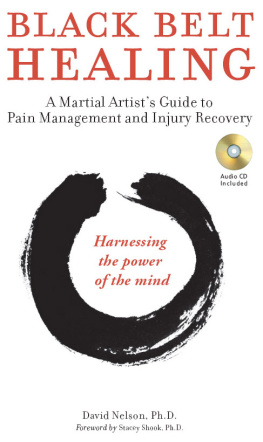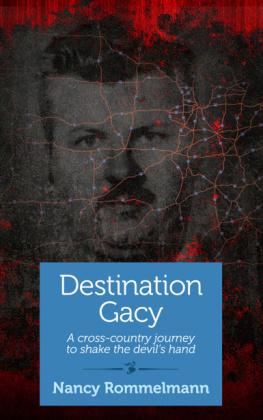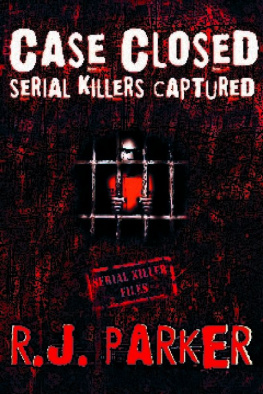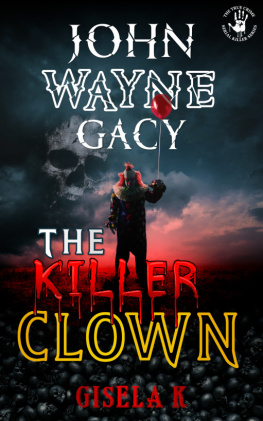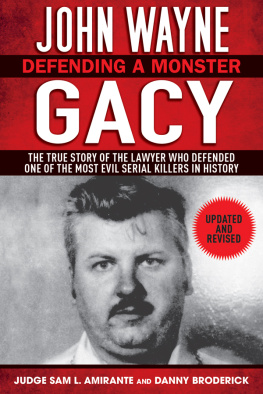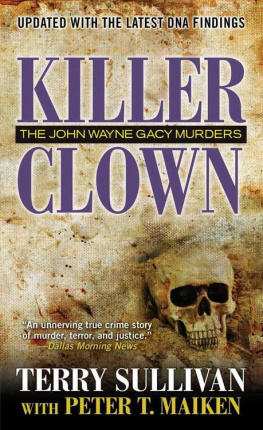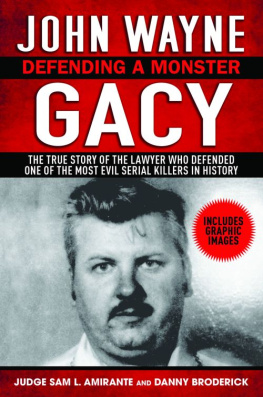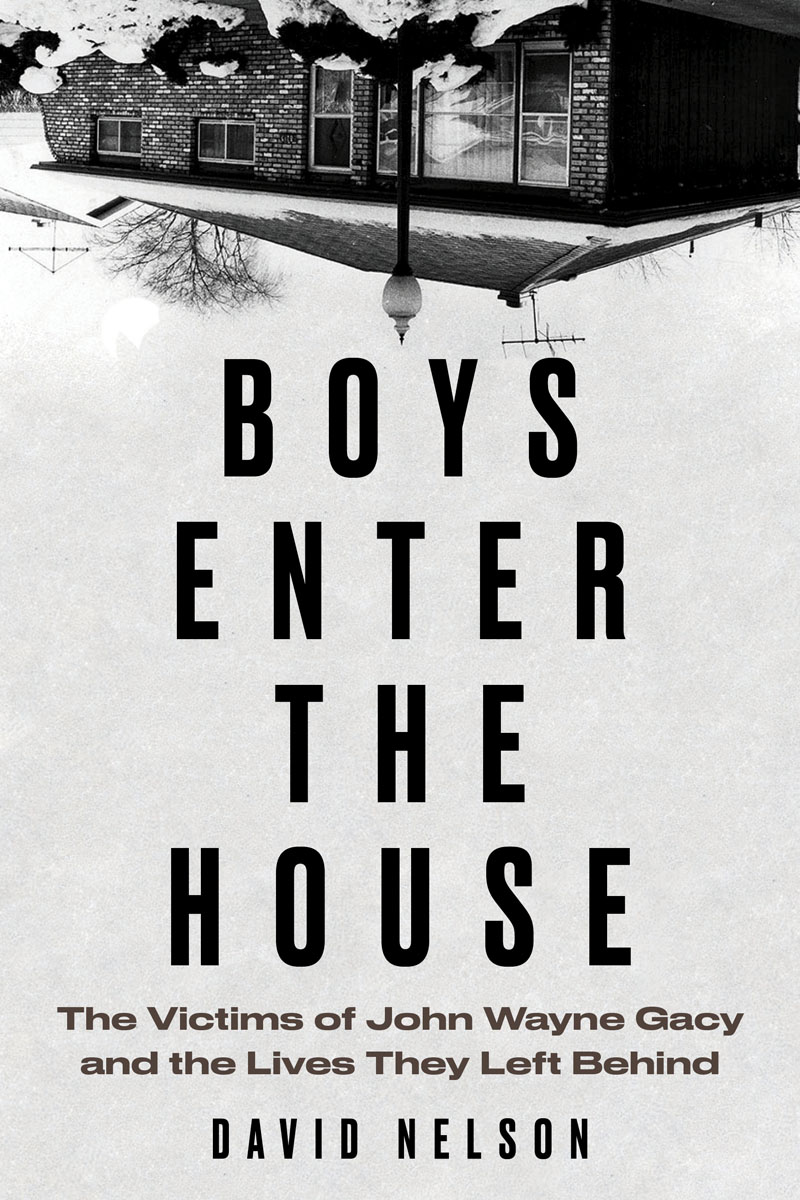
Boys Enter the House is an incredibly researched yet page-turning narrative and an essential read: anyone fascinated with this case knows of the many murdered boys, but Nelson expands their lives to a familiarity Ive never before felt. Nelsons level of attention, detail, and respect toward the victims of criminals is the gold standard for every true crime writer.
MARY KAY MCBRAYER, author of Americas First Female Serial Killer
A s investigators brought out the bagged remains of several dozen young men from a small Chicago ranch home and paraded them in front of a crowd of TV reporters and spectators, attention quickly turned to the owner of the house. John Gacy was an upstanding citizen, active in local politics and charities, famous for his themed parties and appearances as Pogo the Clown. But in the winter of 197879, he became known as one of many so-called sex murderers who had begun gaining notoriety in the random brutality of the 1970s.
As public interest grew rapidly, victims became footnotes and statistics, lives lost not just to violence but to history as well. Through the testimony of siblings, parents, friends, lovers, and other witnesses close to the case, Boys Enter the House retraces the footsteps of these victims as they make their way to the doorstep of the Gacy house.

Copyright 2022 by David Nelson
All rights reserved
Published by Chicago Review Press Incorporated
814 North Franklin Street
Chicago, Illinois 60610
ISBN 978-1-64160-486-4
Library of Congress Control Number: 2021941440
Typesetting: Nord Compo
Printed in the United States of America
5 4 3 2 1
For Mildred Hofelich, who gave me books when I needed them most.
And for Lily and Charlie, my little beams of light.
I am disappearing inch by inch into this house
The Haunting of Hill House, Shirley Jackson
CONTENTS
AUTHORS NOTE
NEARLY THIRTY-THREE YEARS after police arrested John Wayne Gacy, I found myself living in the same neighborhood as some of his victims.
Uptown, on the North Side of Chicago, has become a different place since the 1970s. The Appalachian familiesat one point the largest segment of Uptowns populationhave long scattered, either to the suburbs or back to Appalachia. While many of Uptowns original buildings remain, many of them have been renovated or removed to make way for gyms or coffee shops or glassy apartment buildings devoid of any coziness or comfort.
Today, you can find traces of the past on the North Side. In Uptown specifically, you can still take in a jazz set until 5 AM at the Green Mill or live honky-tonk music at Carols Pub, the last vestige of the Appalachians. You can still walk Sunnyside Mall, where Samuel Stapleton and Randy Reffett hung out together, or pass by their school, Stockton, where Dale Landingin, Billy Kindred, and Billy Carroll also attended in the 1970s.
In the area formerly known as New Town, very little remains of the vibrant gay community of the 1970s where several of the boys roamed or disappeared from, though nearby Boystown carries on its echo. In North Center, you can still go to the Gale Street Inn, where Gacy himself used to schmooze and where, in 2015, I listened to the story of Judy Patterson, who confronted Gacy himself to ask about her missing boyfriend, Greg Godzik.
For the stories that follow, these sacred memories are the primary source. Relatives, friends, and significant others have all stepped forward to retell their memories, not just of the case but of the times before their brother, their boyfriend, or their friend became a face in the newspaper. These memories form not just the narrative structure but the very heart and blood of this book.
Of course, memories are always a bit elusive; like mirages, they shift and vanish as years go by. Sometimes they can conflict with the memories of another person, which I encountered in some situations when interviewing multiple siblings of victims. Other times, official records or statements from the time may slightly contradict: one witnesss memory conflicted in small ways with their testimony at the trial in 1980.
Boys Enter the House attempts to balance these modern-day memories against the many records, news reports, and witness statements recorded back in the 1970s and 80s. The reader should note that these stories are not necessarily told chronologically. For instance, events happening in one chapter for one boy may not be occurring at the same exact time or year for another boy; rather, they are told together for thematical purposes. Wherever dialogue or other direct quotes from past events are included, they have been recorded by witness statements or police reports or are taken from the quotations of those who remembered hearing them spoken.
Obviously, within this book are many depictions of violence, including murder and rape. But readers should note that in addition to these acts, Boys Enter the House also depicts instances of physical, sexual, and emotional abuse, often perpetrated among family members against child victims.
Many of these stories overlap with depictions of sex work, specifically between male sex workers and older male clients. Boys Enters the House favors the term sex worker over prostitute, which brings connotations of criminality and stigmatization. In some instances, I have chosen to use the words hustler or chicken to reflect the colloquialisms of the time. Sex work is work, and sex workers come from unique backgrounds, ultimately deciding to pursue this work for a variety of reasons and circumstances, many of them a result of systemic factors.
Those who hire sex workers, though I acknowledge that they can often take advantage of or exploit sex workers, are treated here with similar sensitivity. This book favors the use of the term client, though it does use the colloquialisms john, chicken hawk, or hawk in keeping with the slang of the day. In many situations in this book, this sex work is consensual; in others, it occurs immorally between adults and underage children.
Terminology and societal perception of many of these topics continues to change, and I strive to be part of any new understanding that both holds the necessary people accountable and empowers others in the way they deserve.
Throughout this book, I have striven to keep focus on victims as much as possible, not just the immediate victims of John Wayne Gacy (or other abusers and villains depicted within) but also the collateral victims who continue to hurt. Ultimately, Boys Enter the House is a coming-of-age story, much like the short story Boys by Rick Moody, from which this book draws its title, another story of boyhood and the various milestones and challenges it entails.
When I first began reaching out to the loved ones of Gacys victims, I often hesitated, wondering if they would see the merit in retelling the case through the eyes of those who suffered the most. For many of them, the remembrance has been cathartic. And for a few others, they did not live to see the completion of this book. For all of them, though, I hope that Ive told their stories honestly, with respect, and that they find their peace, even as the tragedies of this case continue to ripple, now nearly forty-three years after Gacys arrestin some ways, not so long ago.
Next page

